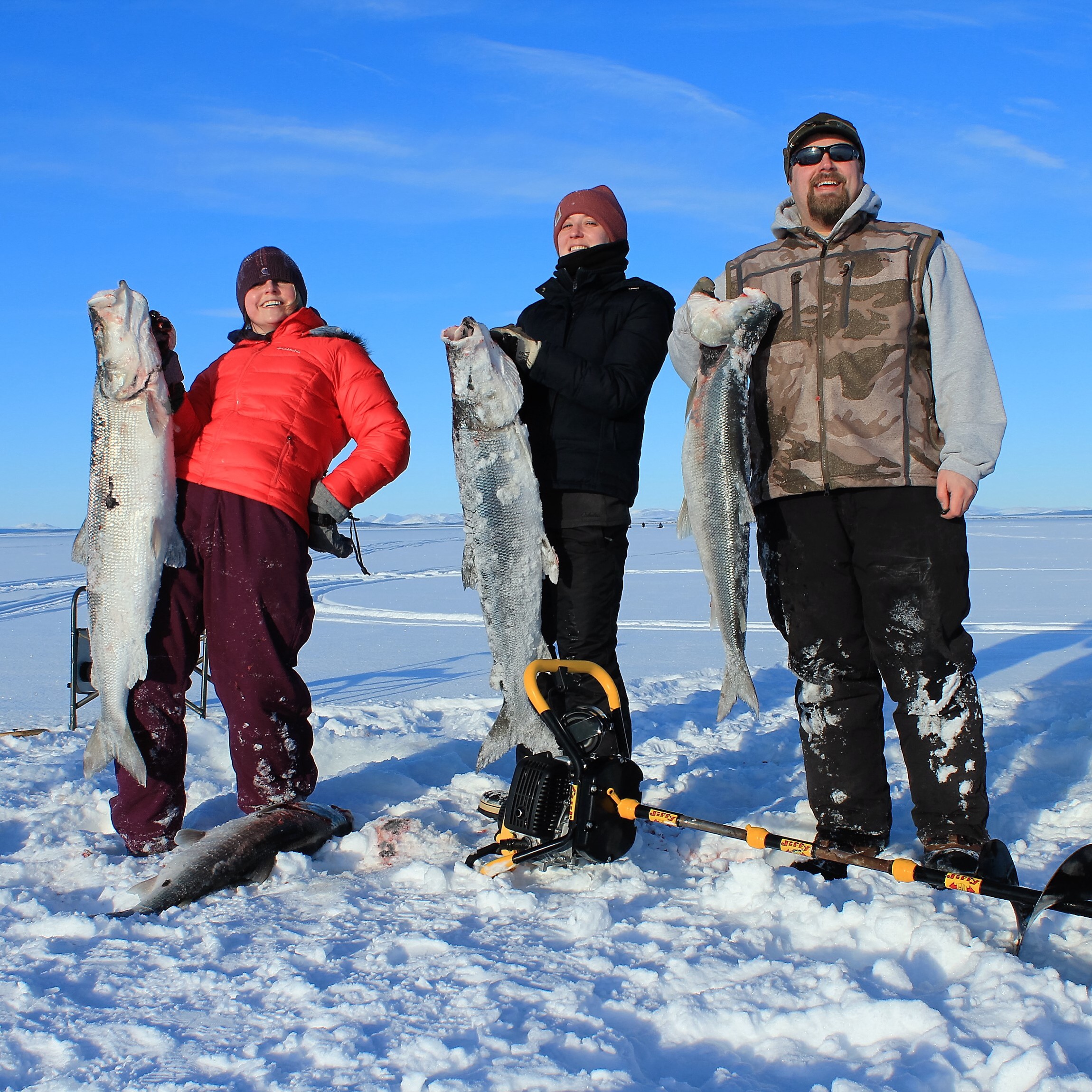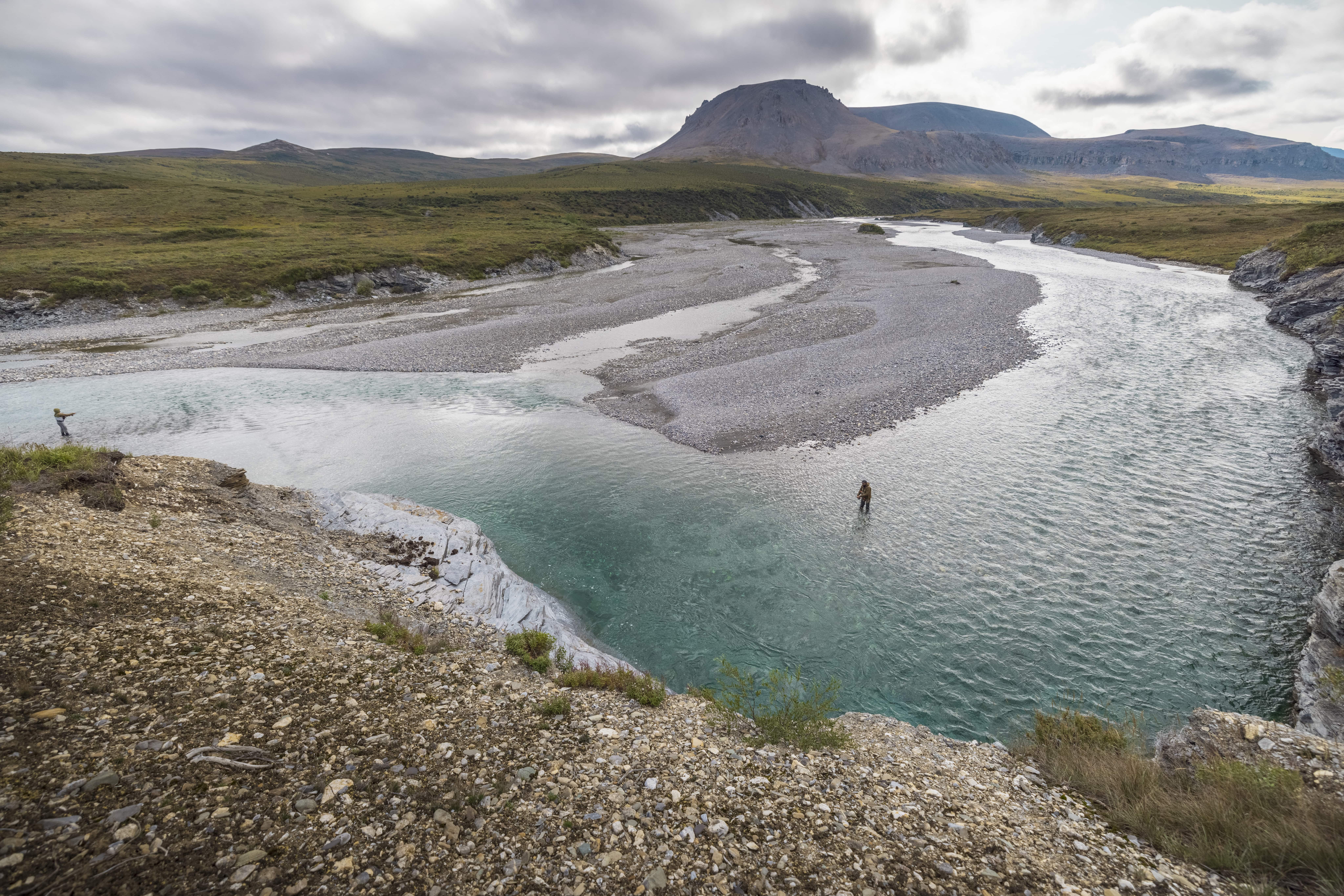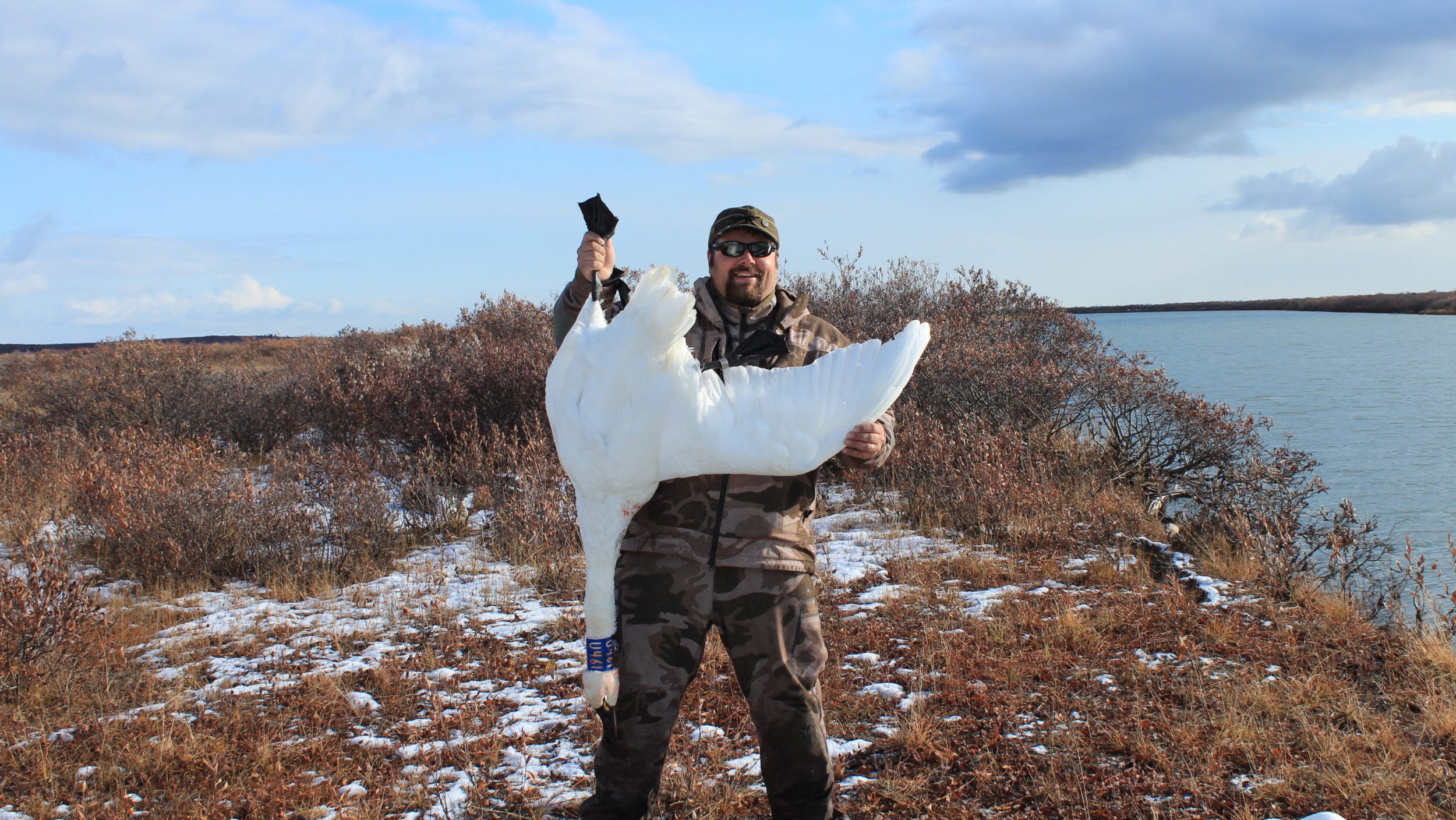Ice Fishing for Arctic Sheefish
In northwest Alaska, hardy anglers prowl the sea ice in search of sheefish, while the fate of sheefish spawning habitat in the Brooks Range hinges on the BLM's next move

[Note: This is the first of a two-part series on Northwest Alaska’s sheefish and how the proposed Ambler Road might affect their population.]
Right now, in northwest Alaska, hardy anglers are prowling the sea ice in search of sheefish. Weighing up to 60 pounds, with some fish measuring more than 50 inches, sheefish are the largest species of whitefish and, according to MeatEater, the “greatest sportfish you’ve never heard of.”
The Iñupiat call them sii, but another name for them is inconnu, which means an unknown person or thing. Among anglers, sheefish are commonly referred to as the “tarpon of the north.”
They can be found in just a handful of watersheds in Alaska, Canada, and Asia. In Alaska, sheefish are known to spawn from the Yukon River to the Kobuk River in the southern Brooks Range. Outside of locals and a handful of diehard anglers, few have ever caught sheefish. Even for Alaskans in much of the state, chasing sheefish amounts to a dream as wild, or even wilder, than a quest for something like a blue marlin.
A Bucket-List Fish Through the Ice
Kotzebue, a community of 3,000 mostly Iñupiaq people situated at the tip of a peninsula jutting into the Chukchi Sea, offers some of the best sheefish ice fishing opportunities. To many, Kotzebue might seem like the end of the earth and then some. For Lewis Pagel, it’s home.
Originally from the Midwest, Pagel moved to northwest Alaska in 2007 to live out his hunting and fishing dreams. He loves chasing grizzlies, musk ox, and all the other game this wild country has to offer. But when it comes to fish, Pagel’s focus rarely wavers from sheefish.
His home in Kotzebue is around 15 miles from the mouth of the Kobuk River, which, besides being the known northern limit to the range of sheefish, has the biggest of the best run in North America.
Outside his work as a chiropractor, Pagel runs an ice fishing guiding business, Arctic Fishing Adventures. Pagel offers all-inclusive guiding and do-it-yourself sheefish ice fishing packages. He is also the Alaska state chairman of Ducks Unlimited. He laughed when I asked him what gets people so excited about sheefish.
“They’re a bucket-list fish,” he says. “There’s hardly anywhere in the world to catch them. Plus, they’re a lot of fun to catch. When they hit, they rip your arm right into the ice hole. One client lost two rods in a day from having fish pull them out of her hands.”
Pagel says you can icefish for sheefish all winter but most folks fish March and April. You’re a lot less likely to freeze to death or get snuck up on by a polar bear then than you are in the long winter darkness. During winter and spring, sheefish travel in large schools chasing herring and smelt in brackish water. Some sheefish overwinter in freshwater, eating nothing and living off their body’s reserves.
In the Path of the Proposed Ambler Road
Three big rivers—the Kobuk, Noatak, and Selawik—drain into the Chukchi Sea near Kotzebue. Sometimes he’ll travel as far as 15 miles to the mouths of the Noatak and Kobuk Rivers to fish, but the fishing is often good just a few hundred yards out from town on the thick sea ice. Pagel uses a 10-inch propane ice auger to drill through it.
Pagel has caught sheefish over 50 inches long and he’s brought giant fish up to the ice that were too big to get through the 10-inch hole. Sheefish can live 20 to 30 years, and don’t spawn until later in life. They’re known to be voracious, aggressive feeders. Finding them isn’t always easy, but when Pagel does, the fishing is hot.
“It’s feast or famine fishing,” Pagel says. “When they’re biting you can catch 100 in an hour. We fish spoons. When they’re hitting, they’ll take anything shiny.”
In August and September, these sheefish will migrate to the upper reaches of the Kobuk and Selawik Rivers to spawn. Fisheries ecologist Kevin Fraley points out that sheefish are very picky, concentrated spawners. Many of their spawning areas are near the route of the proposed Ambler Industrial Road, which, if built, would be a private 211-mile corridor through the southern flanks of the Brooks Range that would be used to develop an unknown number of foreign-owned mines.
Fraley is currently working on a study funded by the Bureau of Land Management (BLM) to get baseline contaminants data in fish from the sections of the rivers that the Ambler Road would cross. He is concerned about potential impacts to sheefish and the overall aquatic ecosystems if the Ambler Road were to be built.
“The populations of fish in the region, such as Kobuk River chum salmon and sheefish that are incredibly important subsistence resources and also represent world-class angling opportunities, could be threatened by contamination, siltation, increased harvest, and chemical spills resulting from the industrial developments,” says Fraley. “To me, the risks to these special fish populations from the Ambler Road are not worth the supposed benefits, which would mostly be the enrichment of foreign mining companies.”
Like many locals, Lewis Pagel shares Fraley’s concerns over what the Ambler Road would mean for sheefish, other species of wildlife, and the hunting and fishing lifestyle. The potential harm to sheefish populations is one of a lot of reasons he opposes the Ambler Road. Pagel points out how most of the road would go through wetlands and why that’s a big issue for fish populations.
“It’s a huge threat,” he says. ”Wetlands are the environment’s filtration system, and in addition to hosting all the wildlife in this region, wetlands help prevent erosion of the land, keep the water and air clean, and provide food for the people and other animals of this region. Mining activities could be detrimental to the waterways near the mine sites, and the roadway itself will alter hundreds of streams and rivers. Anything that ends up in that water will make its way through the Kobuk River system and into Kotzebue Sound.”
Toward the end of my conversation with Pagel, we strayed from sheefish talk to a discussion about the incredible wild country of the Brooks Range. Pagel travels a lot, often to see what the rest of the world has to offer in terms of hunting and fishing opportunities. But nothing compares to his backyard.
“Often, I’ll go sit on a ridge and look out on the land, and I’m like damn! There isn’t another place like this,” Pagel says. “I really hope it stays this way.”
The unique and very limited opportunity to fish for sheefish – whether it be through the ice on the frozen Chukchi Sea or flyfishing during spawning season in the upper reaches of the wildest rivers that remain on Earth – is one of many reasons to oppose the Ambler Road.
Sign the petition to defend these resources and unrivaled backcountry fishing experiences.
Part two of this series will look more in depth at sheefish and flyfishing opportunities for “the tarpon of the north” on the Kobuk River.
Take Action for the Brooks Range
Help ensure the Bureau of Land Management maintains the unique values of this iconic landscape by denying the right-of-way for the proposed Ambler Road.
Sign the Petition


